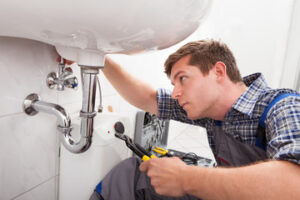Plumbers Sarasota specialize in the installation and maintenance of plumbing systems. These systems facilitate water, gas, and sewage circulation in residential and commercial settings. Plumbers also troubleshoot and repair these systems.

Plumbers typically work with blueprints and architectural plans to execute new plumbing installations. They must be knowledgeable about building codes and regulations to ensure that their work meets standards and compliance.
Plumbers are responsible for the installation, repair and maintenance of a wide range of pipes, fixtures and appliances. They must have excellent attention to detail to ensure that all work is done correctly and efficiently. They also need to have good interpersonal skills to interact with clients, as they often need to explain complicated issues in simple terms and provide clear estimates for work. Plumbers must also have physical strength and stamina to lift heavy equipment and tools, as well as be able to work in confined spaces.
Plumber training varies, but most programs consist of a combination of classroom instruction and on-the-job training. They learn to read blueprints and building codes, as well as how to install, maintain and repair plumbing systems in residential, commercial and industrial settings. Some plumbers specialize in particular types of plumbing, such as fire sprinkler systems or backflow preventer installations.
A plumber’s job requires them to inspect a variety of plumbing systems and components, including water heaters, toilets, sinks, tubs and showers. They must be able to determine whether a system is functioning properly, and identify any potential problems or violations of building codes. They must also be able to use a variety of tools and equipment, including pipe cutters, soldering machines, power tools and leak detection devices.
In addition to their regular duties, plumbers are frequently called upon to troubleshoot and resolve urgent issues. This can include repairing leaking faucets, fixing broken toilets or dealing with flooding basements. In these situations, it is important for them to be able to think quickly on their feet and come up with effective solutions.
In addition to inspecting the sump pump, a home inspector should test its operation by reaching down into the pit and pulling up on a lever or button that sticks out of the crock or basin. This should cause the pump to activate and begin draining the water, but if it doesn’t, or if it makes loud, screeching noises, the homeowner should contact a licensed plumber. Similarly, a home inspector should make sure that the discharge line is not clogged with debris and that it efficiently directs groundwater away from the house.
Check the Discharge Line
The discharge line is a pipe that carries away the water the sump pump pumps out of your basement. It should be directed far away from the home’s foundation, and it should always run downhill. If it doesn’t, you could have backflows, which can cause problems with the basement’s foundation. The line should also be buried outside, and contractors typically install it two feet below the frost line. In winter, it can freeze and clog, so homeowners should insulate it with heat tape. This is an affordable option that can prevent frozen pipes and clogs. Ideally, the pipe should be directed to a nearby stream or street drain.
Lubricate the Bearings
In order to prolong the life of your sump pump’s bearings, it is important to relubricate them regularly. Lubrication reduces friction, wear, and the amount of heat generated. It also allows the bearing to rotate smoothly. The right lubricant can dramatically extend bearing life.
The type of lubricant you use and how it is applied will make an impact on the performance of your sump pump. The best lubricant for your application will depend on the equipment, bearing location, speed, and load. There are three main types of lubrication: grease, oil, and solid film. Grease lubrication involves the deposition of a thin layer of grease onto the bearing surface. It is suitable for low speeds and loads, while oil lubrication can be used for high-speed and heavy-load applications. Solid film lubrication utilizes a solid lubricant that provides excellent lubricity and sealing properties. This type of lubrication is suitable for low to moderate speeds and loads.
Regardless of the type of lubrication you choose, it is important to remove any old grease from the bearing and housing. If you do not, the new lubricant will mix with the old grease and create an unfavorable combination that can cause damage to the bearings. To remove old grease from the bearings, flush the housing and the bearing with a clean degreasing solution or warm kerosene. Then, wash the bearing and the outer race with a kerosene rinse to remove any remaining contaminants. Once the bearing is dry, you can repack it with fresh grease.
When relubricating the bearings, you should only inject a measured amount of grease. Adding too much will increase the temperature and friction inside the bearing, decreasing its efficiency and longevity. On the other hand, using too little will not provide enough lubrication.
There are many different ways to relubricate a bearing, including using a drip system, splash lubrication, and constant level oilers. Drip systems supply lubricant through a small tube, allowing you to control the flow. Splash lubrication uses flinger discs to pick up the oil and splash it throughout the hardware. Constant-level oilers have a reservoir with view ports to allow you to monitor the lubrication level.